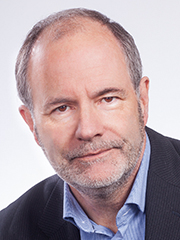Future-proofing organizations for patient-centric care
More and more healthcare organizations are embracing consumerism as a strategy to improve the health of patients and reduce the cost of care. Even though much of the industry is still in the early stages of truly delivering on the promise and value of patient-centric care, healthcare executives need to turn their attention to the future to meet the coming demands and challenges of the new era of healthcare. Now is the time to focus on future-proofing healthcare organizations through the use of technology that manages risk, boosts clinical, financial and operational performance, and improves patient outcomes.
As an industry, healthcare has a reputation for lagging behind other sectors such as finance, retail and services-based organizations. Retail companies have successfully used technology for consumer engagement, operational-efficiency gains, and outright market disruption to eliminate the competition and transform consumers’ expectations. In healthcare, the market disruptors are seeking new technology and strategies to change the way they, and the rest of the industry, deliver care.

Insurers, in particular, are starting to embrace consumer-centric technology: However, for these insurers to improve their members’ experience, they must also improve the experience of their provider partners.
Several technologies can be helpful as health plans and providers embrace the shift to patient-centric care.
Clinical Data Exchange
Health plans are making strategic investments to gain access to, and leverage, clinical data for comparison against claims data to identify gaps in care. Once care gaps have been identified, health plans can share these findings with their provider partners and with members to proactively manage a patient’s health conditions.
To achieve this level of management, healthcare organizations need a solid strategy to ingest clinical data directly from providers and other sources. The technology investment will allow teams to use clinical data for more than just identifying gaps in care. Leveraging clinical data can help health plans discover insights not found in claims data (e.g., lab results, clinical conditions, patient-reported data via biometric devices, changes in health, genetic test results).
Interoperability Platforms
Data scientists have proven repeatedly that traditional medical care comprises not more than 20% of a patient’s ulitmate health outcomes in terms of length of life and quality of life. The other 80% is due to social determinants of health around 40% (safe housing, crime, transportation availability, education, employment, income, family and social support) behavioral and lifestyle (tobacco use, exercise, diet, alcohol and drug use and sexual activity) around 30% and the physical environment (air, ground and water quality, local pollutants and contaminants) comprise around 10%
Health plans should combine all this data, perform analytics, and share those insights with providers directly in the electronic health record, or into a member’s mobile applications. Health plans should use the insights derived from the data to engage providers to be proactive with their patients to manage conditions, change behaviors, and improve utilization of services.
Precision Health
Patients, physicians and health plans all share a common goal of personalized care that is at the same time cost-effective and delivers superior outcomes. In order to deliver highly personalized care, providers and health plans need access to complete information about patients, and they need access to population- relevant predictive models and analytic measures to guide care decision-making.
As the industry continues to evolve to deliver personalized care while also adopting value based payment models organizations that implement and use appropriate, purpose-designed technology, coupled with strategies that put the member first, will be best poised for long-term success.





